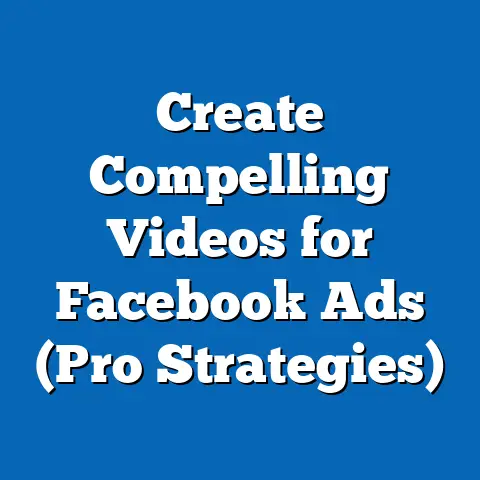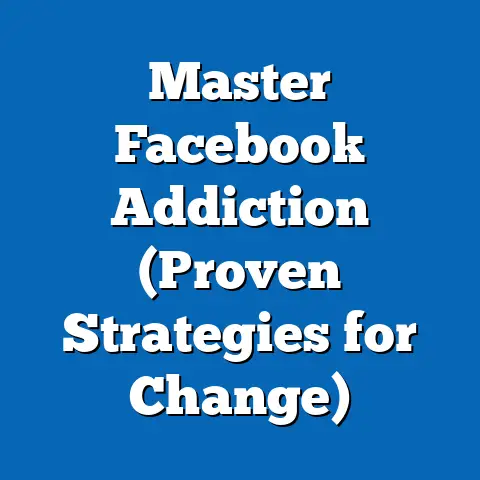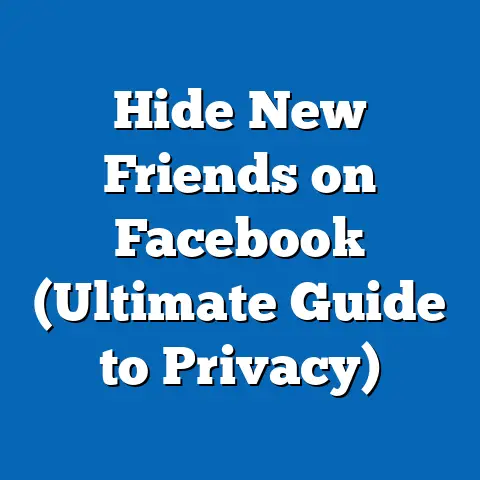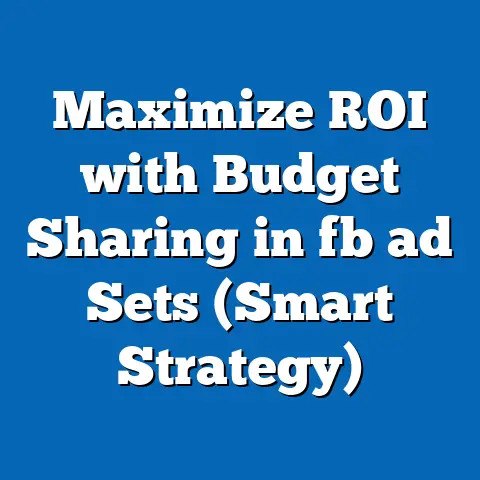Create a Compelling Facebook Ad for GoFundMe (Pro Tips)
As the leaves turn golden and a crispness fills the air, a sense of community and giving blossoms during the autumn season. We see it in the pumpkin patches, the Thanksgiving food drives, and the early preparations for holiday celebrations. This time of year, emotions run high, and people are more inclined to open their hearts (and wallets) to support causes they care about. That’s why now is the perfect moment to harness the power of Facebook advertising to boost your GoFundMe campaign.
I’ve personally witnessed the incredible impact of well-crafted Facebook ads on fundraising campaigns. I remember working with a local animal shelter during the holiday season. Their Facebook ad, featuring a heartwarming video of rescued puppies and kittens, went viral and resulted in a significant increase in donations. This experience taught me the power of combining compelling visuals, emotional storytelling, and strategic targeting to amplify a cause.
With charitable giving spiking during key periods like Thanksgiving, Christmas, and New Year’s, understanding how to create an effective Facebook ad can make all the difference. This guide will provide you with the pro tips you need to craft ads that resonate with potential donors and maximize your fundraising success this season.
Understanding Your Audience
Knowing your audience is the cornerstone of any successful marketing campaign, and Facebook advertising for GoFundMe is no exception. It’s not enough to simply put an ad out there and hope for the best. You need to understand who you’re trying to reach, what motivates them, and what kind of messaging will resonate with them most effectively.
Facebook’s audience targeting features are incredibly powerful and allow you to narrow down your audience based on a variety of factors, including:
- Demographics: Age, gender, location, education, relationship status, and job title.
- Interests: Hobbies, passions, favorite brands, and activities they engage in online.
- Behaviors: Past purchase behavior, engagement with specific types of content, and device usage.
For example, let’s say you’re raising funds for a local children’s hospital. You might target:
- Parents: Using demographics like age (25-55) and parental status.
- Community Members: Targeting people who live in the local area and have expressed interest in local community events or organizations.
- Philanthropists: Targeting people who have a history of donating to charitable causes or who follow relevant non-profit organizations.
- Families: Targeting people who have expressed interest in family-related activities or follow parenting blogs.
During the holiday season, you might also consider targeting people who express interest in:
- Christmas Charities: Targeting people interested in the Christmas spirit of giving.
- Thanksgiving Food Drives: Targeting people interested in contributing to the Thanksgiving celebrations for the needy.
- Local Businesses: Targeting businesses that often participate in charitable giving.
Pro Tip: Don’t be afraid to experiment with different audience segments to see what works best. Facebook’s ad reporting tools will provide valuable insights into which audiences are most responsive to your ads.
I recall a time when I was helping a friend promote their GoFundMe campaign for medical expenses. Initially, we targeted a broad audience, but the results were underwhelming. After analyzing the data, we discovered that people with a personal connection to the specific medical condition were far more likely to donate. By narrowing our focus to that niche audience, we saw a dramatic increase in donations.
Key Takeaway: Invest time in understanding your audience and leveraging Facebook’s targeting features to reach the right people with the right message.
Crafting a Compelling Message
The message of your Facebook ad is what will ultimately determine whether or not someone clicks through to your GoFundMe campaign and makes a donation. It needs to be clear, concise, and emotionally compelling.
Storytelling is Key: People are more likely to connect with a cause when they understand the human story behind it. Share personal anecdotes, highlight the challenges faced, and emphasize the impact that donations will have.
Clear and Concise: Get straight to the point. Explain the purpose of the GoFundMe campaign, the specific needs it addresses, and why people should care. Avoid jargon or overly technical language.
Emotional Appeal: Tap into the emotions of your audience. Use words that evoke empathy, hope, and a sense of community. During the seasonal period, themes of gratitude, generosity, and togetherness can be particularly effective.
Call to Action: Tell people exactly what you want them to do. Use strong, action-oriented verbs like “Donate Now,” “Support This Cause,” or “Help Us Reach Our Goal.” Make it easy for people to click through to your GoFundMe campaign.
Here are some examples of compelling messaging you can adapt for seasonal campaigns:
- Thanksgiving: “This Thanksgiving, help us provide a warm meal for families in need. Your donation will bring joy and comfort to those who are struggling. Donate Now!”
- Christmas: “Give the gift of hope this Christmas. Your contribution will help us provide essential resources to children in our community. Support This Cause!”
- New Year’s: “Start the New Year with a act of kindness. Your donation will help us make a difference in the lives of others. Help Us Reach Our Goal!”
Pro Tip: Use language that speaks directly to your target audience. If you’re targeting families, use language that resonates with parents. If you’re targeting young adults, use language that is more casual and engaging.
I once worked on a campaign for a local food bank during the holiday season. We experimented with different ad copy, and we found that messages that emphasized the direct impact of donations – “Your $25 donation can provide a holiday meal for a family of four” – were far more effective than generic appeals for support.
Key Takeaway: Craft a message that is clear, concise, emotionally compelling, and includes a strong call to action. Focus on storytelling and highlighting the direct impact of donations.
Visual Elements that Attract Attention
In the fast-paced world of social media, your Facebook ad needs to grab attention instantly. Visual elements play a crucial role in achieving this.
High-Quality Images or Videos: Use visuals that are clear, well-lit, and visually appealing. Avoid blurry or pixelated images. Videos can be especially effective at telling a story and evoking emotion.
Emotionally Evocative: Choose visuals that align with the emotional tone of your message and the seasonal theme. For example, images of families sharing a meal during Thanksgiving or children opening gifts on Christmas morning can be very powerful.
Relevance: Ensure that your visuals are directly relevant to the cause you’re supporting. If you’re raising funds for an animal shelter, use images of animals. If you’re raising funds for a medical condition, use images that are sensitive and respectful.
Design Elements: Pay attention to the colors, fonts, and layout of your ad. Use colors that are visually appealing and consistent with your brand. Choose fonts that are easy to read. Ensure that your ad is well-organized and visually balanced.
Here are some visual element ideas for seasonal campaigns:
- Thanksgiving: Images of families sharing a Thanksgiving meal, volunteers preparing food baskets, or people expressing gratitude.
- Christmas: Images of children opening gifts, families decorating a Christmas tree, or volunteers delivering toys to underprivileged families.
- New Year’s: Images of people celebrating the New Year, fireworks, or people making resolutions.
Pro Tip: Test different visual elements to see what resonates best with your audience. Facebook’s ad reporting tools will provide insights into which visuals are most engaging.
I recall a campaign where we were promoting a GoFundMe for a family who had lost their home in a fire. Initially, we used a stock photo of a house fire, but the ad performed poorly. When we replaced it with a photo of the family standing in front of the ruins of their home, the ad’s engagement skyrocketed. The personal connection made all the difference.
Key Takeaway: Use high-quality, emotionally evocative visuals that are directly relevant to your cause. Pay attention to design elements to create an ad that is visually appealing and easy to understand.
Leveraging Seasonal Trends and Hashtags
Tapping into seasonal trends and relevant hashtags can significantly increase the visibility and engagement of your Facebook ad.
Trending Topics: Identify trending topics or events that are relevant to your cause. For example, if there’s a local Thanksgiving food drive happening in your area, you could create an ad that promotes your GoFundMe campaign in conjunction with that event.
Relevant Hashtags: Use hashtags that are popular during the season and relevant to your cause. Examples include #ThanksgivingGiving, #ChristmasCharity, #NewYearsResolutions, #GivingTuesday, and #HolidayGiving.
Urgency: Create a sense of urgency by highlighting limited-time matching donations or seasonal challenges. For example, you could offer to match all donations made during a specific week or create a challenge where people can donate a certain amount for every mile you run or walk.
Seasonal Challenges: Encourage participation by creating a seasonal challenge. For instance, you could challenge people to donate a certain amount for every ornament they hang on their Christmas tree or for every canned good they donate to a food drive.
Pro Tip: Research trending topics and hashtags before creating your ad. Use tools like Google Trends or Twitter Trends to identify what’s popular at the moment.
I once helped a local charity promote their holiday giving campaign by creating a “12 Days of Giving” challenge on Facebook. Each day, we posted a different challenge or activity that people could participate in to support the cause. This generated a lot of buzz and engagement, and it helped us reach a wider audience.
Key Takeaway: Incorporate seasonal trends and relevant hashtags into your Facebook ad strategy to increase visibility and engagement. Create a sense of urgency and encourage participation through challenges or limited-time offers.
Analyzing and Optimizing Your Ad Performance
Once your Facebook ad is live, it’s crucial to monitor its performance and make adjustments as needed.
Key Performance Indicators (KPIs):
- Click-Through Rate (CTR): The percentage of people who see your ad and click on it.
- Engagement Levels: The number of likes, comments, and shares your ad receives.
- Conversion Rate: The percentage of people who click on your ad and then make a donation.
- Cost Per Click (CPC): The amount you pay each time someone clicks on your ad.
- Return on Ad Spend (ROAS): The amount of revenue you generate for every dollar you spend on advertising.
Adjustments: Based on the data you collect, make adjustments to your ad as needed. This could include changing your targeting, revising your message, or experimenting with different visual elements.
A/B Testing: Use A/B testing to compare different versions of your ad and see which one performs best. For example, you could test two different headlines or two different images to see which one generates more clicks.
Pro Tip: Don’t be afraid to experiment. The key to successful Facebook advertising is to constantly test and optimize your ads based on data.
I remember a campaign where we were promoting a GoFundMe for a local family who had lost their home in a fire. Initially, the ad’s click-through rate was low. After analyzing the data, we discovered that the headline was not compelling enough. We experimented with different headlines, and we found that a headline that emphasized the family’s immediate needs – “Help the Smith Family Rebuild Their Lives” – generated a significantly higher click-through rate.
Key Takeaway: Monitor the performance of your Facebook ad closely and make adjustments as needed based on the data you collect. Use A/B testing to compare different versions of your ad and see which one performs best.
Conclusion
Creating a compelling Facebook ad for your GoFundMe campaign is essential, especially during the seasonal period when people are more inclined to give. By understanding your audience, crafting a compelling message, using visually appealing elements, leveraging seasonal trends, and analyzing your ad performance, you can maximize your fundraising efforts and make a real difference in the lives of others.
I’ve seen firsthand the power of community support and the incredible impact that each donation can make. I encourage you to take action today by applying the pro tips discussed in this article to your own GoFundMe campaign. Together, we can harness the spirit of giving to create a better world.
Call to Action:
Share your own experiences with GoFundMe campaigns in the comments below. What strategies worked best for you during previous seasonal fundraising efforts? Let’s learn from each other and support each other in our efforts to make a difference.






